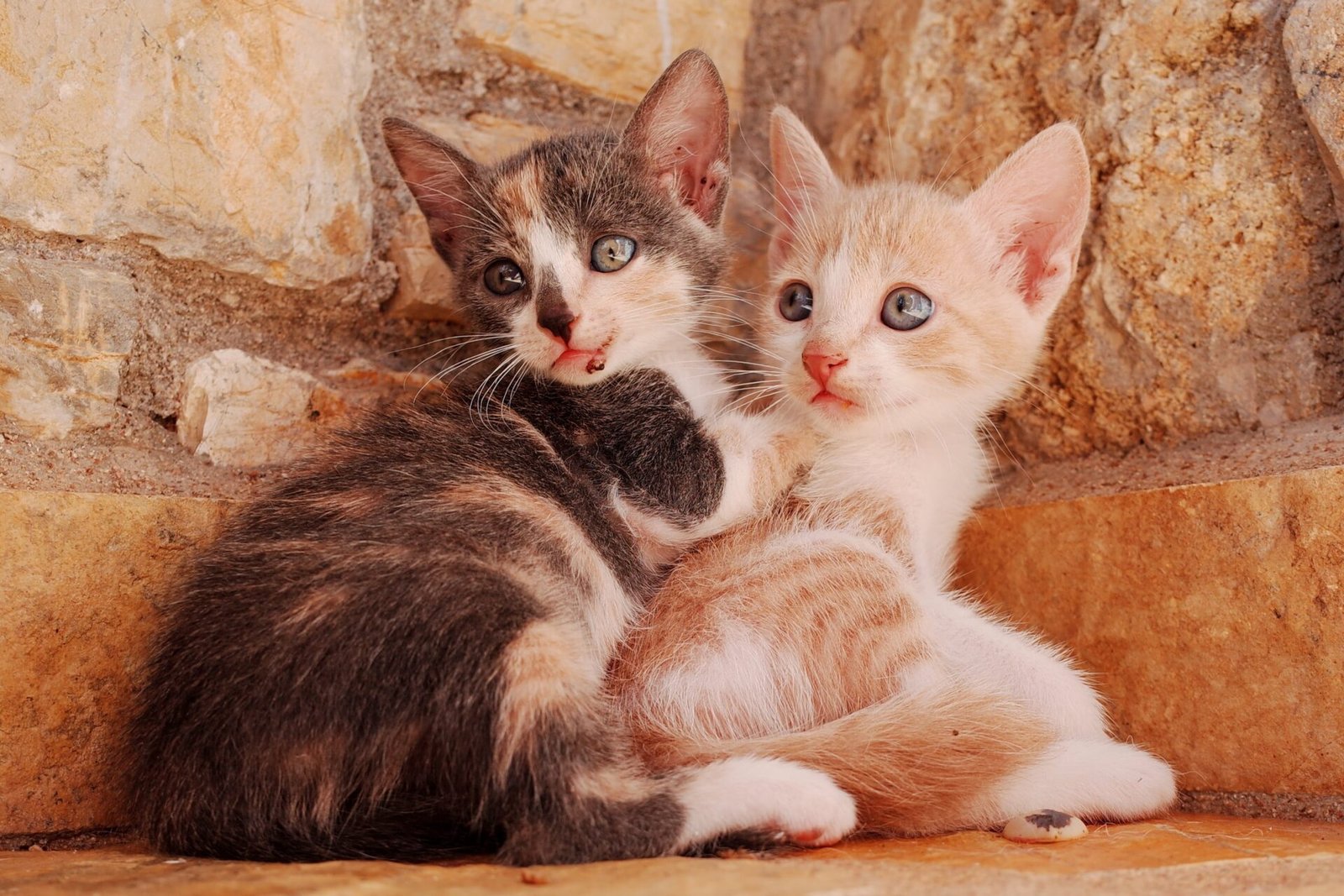Cats are solitary creatures, but these cats have a good time with other pets and owners. They make a good group with other cats and pets, but sometimes one of the difficult tasks is to introduce two cats.
The introduction process must be conducted carefully because not all cats accept each other easily, but sometimes they start hissing, aggressing, etc. Bringing a new cat to your home is always a big deal.
But here are some guidelines that can help you introduce your cat to others.
Consider Your Cat Requirements
See what your resident cat needs, and what is the behavior of your cat with other pets? Is it safe for your new cat to be introduced to other cats?
How much energy do they have?
It is a good idea to adopt a new cat with the same age and health, or a cat with the same energy levels. For example, it may seem like your 10-year-old cat would benefit from the excitement a kitten brings into the home, but it’s more likely your older cat will be consistently bothered by the kitten who wants to play all the time.
What’s their experience with other cats?
If your cats spend their time alone and never meet with other cats, then your cats take time to adjust themselves to other cats. Sometimes they never accept other cats. Most cats accept, but one of the cat breeds, the Persian cat, takes time to accept other cats.
Ideally, the new cat is known to enjoy the company of other cats, as this will likely make the introduction process easier. If you see your cat, hissing to see other cats, it is probably difficult for you to introduce both cats.
Setting up the home for your new cat
If you have decided to introduce a new cat to your resident cat, then setting up your home for a new cat is essential. First, confine your cat to a new room that is not as much used as others.
Ideally, pick a room that your resident cat does not use much and that you do not need constant access to, perhaps a spare bedroom or study. The cat’s new room should contain:
- Food
- Water
- Hiding Places
- Litter Tray
- Toys
- Scratching Posts
- Comfortable resting areas with bedding
Brand-new items: These items must be brand new and come with your new cat. It is not a good idea to use some of your resident cat’s belongings, as these will smell like your resident cat, which may make your new cat uneasy at a time when you are trying to help it feel relaxed in its new surroundings.
Reducing your resident cat items, make your cat stressed. So, be sure that all the items are different for both cats.
Give Plenty of time to your new cat but do not ignore your resident cat: Give the new cat plenty of time, so that they easily know the routine of the house and adapts to the new environment, allowing your new cat’s scent to become a part of the room.
- Actively your cat rubbing its scent gland areas on its face against furniture and the corners of the walls and by scratching its scratching post
- Passively by your cat sleeping and resting on bedding and playing with toys
Comfortable with the new environment: Cats easily adapt to new environments, in days or maybe weeks. But if your cat is comfortable in the new environment, they show the following signs:
- Welcoming actions when you walk in the door, like coming close, rubbing against your legs, chirping, purring, and meowing.
- Flipping over and resting on its side with its tummy uncovered.
- Using its toys to play.
- Facial rubbing against the room’s furnishings, wall corners, and other objects.
- Regular eating, drinking, grooming, and using the loo habits.
Signs of frustration at being confined include:
If your new cat is frustrated in a new room, you should give them access to the corridor and other rooms where the resident cat has not reached them. But if it is not possible for you then speed up your introducing process.
- Scratching or pawing at the door and surrounding area, or the windows
- Meowing for several minutes at a time
- Pacing by the door
- Rearing up at the door
- Swiping at you when you try to leave the room
Scent swapping
It’s time to start introducing the cats to one another once each cat is settled into its area of the house. Begin by progressively exposing each cat to the other’s scent (without actually meeting).
This is crucial because cats can tell whether they belong to the same social group by smelling other cats. By developing a shared fragrance, we hope the cats will identify one another as members of the same social group.
Fragrance swapping works on the principle that before the two cats physically meet, they should both grow accustomed to each other’s fragrance.
By doing this, you can increase the likelihood that they will accept each other’s physical presence since they will see each other as fellow members of the same group.
You may also like: https://persiancatinfo.com/10-fascinating-facts-about-persian-cats/
Step 1: Exchange bedding
Take a single blanket or other item of each cat’s bedding and place it in one of the other cats’ beds to start scent trading. To ensure that neither cat has fewer places to lie or rest after this bedding swap, there should be plenty of bedding for both cats.
The idea is for both cats to lie on each other’s bedding, combining their two scents to form a shared aroma. Observe both cats’ reactions to the bedding in silence.
As a result, they will need to go through the processes much more slowly. A cat who exhibits negative behaviors towards the bedding, such as deliberately avoiding it or even hissing at it, may be less inclined to accept a new cat into its household.
If the resident cat is relaxed in the scent of a new cat then the bedding will change to a new cat. This makes mingling in the scent of both cats by which they don’t show any bad behavior to each other when they meet.
Step 2: Allow exploration of each cat’s area
In addition, the resident cat could be temporarily confined (for example, during the night, to the owner’s bedroom) to give the new cat a chance to explore the resident cat’s area of the house if the cats do not react negatively to each other’s scent on the bedding (and on the rubbed areas).
But confinement should only happen in situations where it is unlikely to result in any negative emotions, like irritation.
On the other hand, to give the incumbent cat more freedom to explore the space, the new cat may be temporarily taken out of its room and placed somewhere else.
The latter should only happen if the new cat is completely at ease, therefore this is unlikely to be advised until.
Step 3: Allow visual contact
The cats should only be allowed to see one another once they are fully relaxed in the home in general and when encountering the scent of the other cat. Being able to see each other should happen through a physical barrier. This can be achieved in several ways, including:
- a door held slightly ajar (so they can’t pass through)
- a mesh barrier – some people make a wooden door frame that fits within their existing door frame that is covered in mesh wire
- a children’s stair gate
How much hissing is normal when introducing a cat
If your cat starts hissing towards a new cat, and it’s not calm down within 1 or 2 minutes, you should separate the cats. Some light swatting is also common. Some hissing is normal, but if your cat is chasing, screaming, or flattening their hair it is a sign of threat.
If their tail becomes stuck, and their ears are also flattening, separate your cat as short as possible. Your resident cat attacked after hissing.
Good signs when introducing cats to each other
When your resident cats feel comfortable with other cats, they start smelling and licking other cats. This is a sign that your cat has not been threatened in the presence of other cats.
If there is no growling and hissing, introduce them without any barrier. But don’t force your cat to go near other cats.
- Eating the treats in the presence of the other cat.
- Playing with a toy in the presence of the other cat.
- Ignoring each other and going about their own business on opposite sides of the baby gate.
- Touching noses through the gate, playing footsies under the gate, and/or rubbing their bodies against the gate.
How to introduce two cats when one is aggressive
When you are introducing other cats while one is aggressive, first proceed with the introduction process slowly. Second, give the cat treats that show aggression.
Third, keep them enough apart or some barrier in them that they don’t attack each other. Give space or leave alone to your aggressive cat.
Introducing a new cat to a multi-cat household
If you are introducing your cat, then follow these instructions:
- Give them separate rooms
- Exchange their smell
- Allow visual contact
- Appreciate their interactions
- The litter tray should be separate
- Meet them with a barrier
- If they are relaxed then remove that barrier
- If you see any hissing and growling then keep them away from other
- In few days, they become a friend
Introducing kitten to older cat hissing
It’s not uncommon for older cats to display territorial behavior when a new kitten is introduced to the household. Hissing and growling are ways for the older cat to establish boundaries and communicate discomfort. It’s important to give them time to adjust to each other’s presence.
But both cats must have the same energy levels, if they fight or attack, they can resist each other with equal force.
Conclusion
If you are introducing your new cat to a resident cat, you must follow the upper guidelines. If you have any queries about your cat, you can leave comments here, we can answer that issue.







